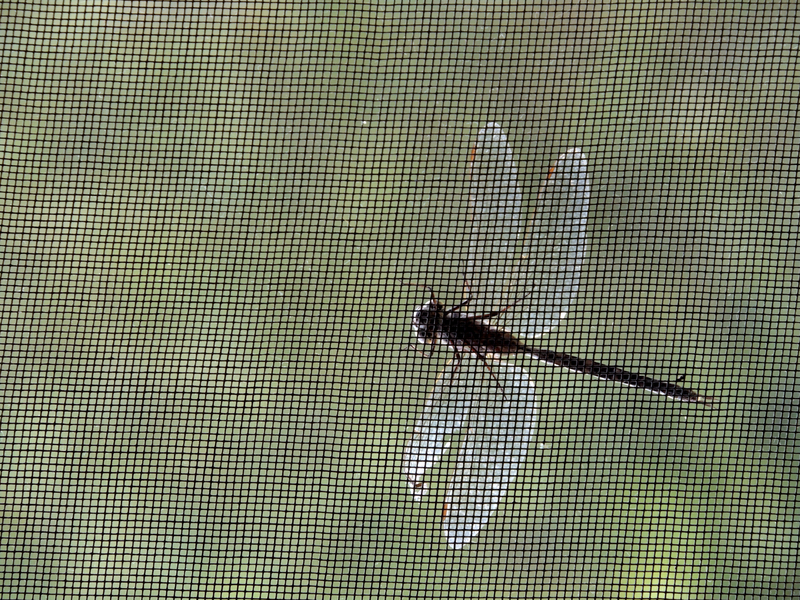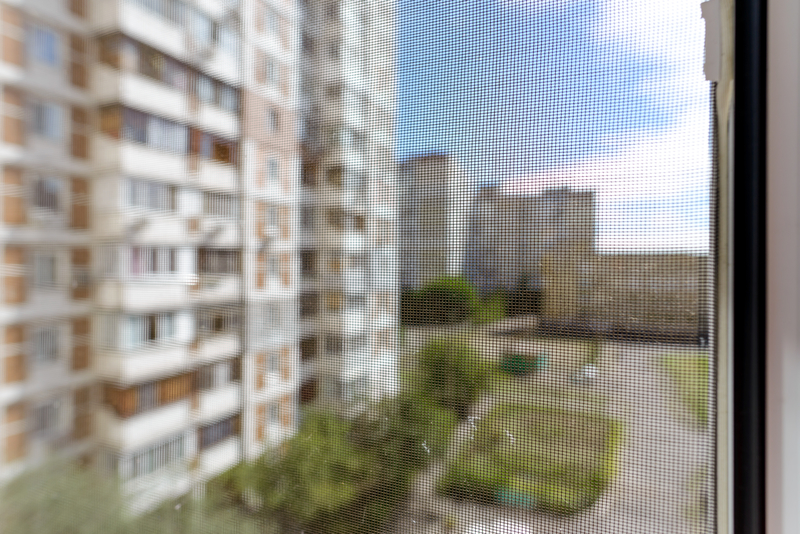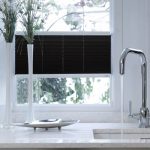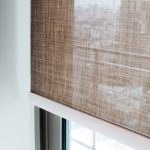Discover the Benefits of Quality Fly Screens for Your Home
What are Fly Screens & What Types are There?
Updated in April 24
Insects and flies can present considerable difficulties for households, particularly when they are drawn to light, especially at night. It is crucial to address this issue for your well-being. Most insects gain access through open windows, which can be inconvenient during hot summers when everyone desires fresh air. This is where fly screens come in.
Fly screens are essential barriers that effectively keep these pests at bay, typically made of wire mesh, and are installed over windows to prevent insects from entering rooms. With a variety of types available, each designed to deter different types of insects, they provide a vital solution for maintaining a bug-free home.
What are Fly Screens?
Fly screens, also known as insect screens or bug screens, are protective barriers made of mesh that are installed over windows, doors, and other openings in buildings. Their primary function is to prevent insects, such as flies, mosquitoes, and bugs, from entering indoor spaces while still allowing airflow.
Fly screens help maintain a comfortable and hygienic indoor environment, free from the annoyance and health hazards posed by insects, by acting as a barrier between the interior and exterior environments.
Types of Fly Screens
Fly screens provide a simple yet effective method of keeping insects away while allowing fresh air to circulate indoors. There are several types of fly screens to choose from, each with its own unique benefits and features.
Retractable Fly Screens
Retractable fly screens offer a versatile solution for protecting against insects. These screens can be easily pulled across windows or doors when needed and discreetly retracted when not in use. They come in various configurations, making them suitable for a wide range of openings.
Retractable fly screens are particularly popular due to their seamless integration with existing architectural features and their ability to maintain unobstructed views when retracted.
Fixed Frame Fly Screens
Fixed frame fly screens, also known as hinged or stationary fly screens, are permanently installed over windows and doors. They consist of a sturdy frame that securely holds the mesh in place, offering continuous protection against insects.
Aluminium, steel, and wood are just a few of the materials that may be used to customise fixed-frame fly screens to fit a variety of architectural designs and aesthetic preferences. They offer a reliable and long-lasting option for insect control. However, they lack flexibility.

Sliding Fly Screens
Sliding fly screens are specifically designed for sliding doors and windows. These screens feature a horizontal or vertical sliding mechanism that enables effortless opening and closing as required.
These screens are best suited for areas with frequent crowd, and foot traffic, such as patio doors or large windows, as they allow easy access while effectively preventing insects from entering. They are available in single or double-panel configurations, providing flexibility in installation and operation.
Magnetic Fly Screens
Magnetic fly screens employ a magnetic closing mechanism to safeguard windows and doors from insects. These screens are made up of flexible mesh panels that have magnetic strips on the sides, enabling them to attach firmly to the frame when closed.
For temporary insect management, magnetic fly screens provide a practical and user-friendly option. They can be effortlessly taken off and reattached as required, making them especially favoured for use in rented accommodations or vacation homes where permanent installation may not be viable.
Types of Mesh Materials Used in Fly Screens
Fly screens are created using a variety of mesh materials, each offering distinct characteristics and advantages.
Fibreglass Mesh
Fibreglass mesh is a popular option for fly screens because of its durability and affordability. Fibreglass mesh is lightweight and flexible, making it easy to install and handle. It allows for excellent visibility and airflow while effectively keeping insects out. Furthermore, fibreglass mesh comes in a range of colours to match different window and door frames.
Aluminium Mesh
Aluminium mesh is renowned for its strength, making it perfect for high-traffic areas and security purposes. It is made from woven aluminium wires that are resistant to rust and corrosion, ensuring long-lasting performance even in harsh environments. Aluminium mesh provides exceptional airflow and visibility while effectively safeguarding against insects.
Stainless Steel Mesh
Stainless steel mesh is constructed from interwoven stainless steel wires that possess high resistance to corrosion, rust, and degradation. Stainless steel mesh offers unparalleled strength and security, making it ideal for both residential and commercial purposes. It allows for excellent airflow and visibility while effectively keeping out insects, rodents, and other pests.
Polyester Mesh
For a cost-effective and lightweight option, polyester mesh is an excellent choice for fly screens. It is made from woven polyester fibres coated with PVC or other protective coatings. Polyester mesh is highly durable and resistant to tearing, making it suitable for areas with high foot traffic. It provides good visibility and airflow while effectively protecting against insects. These types of mesh are also used in blinds for enhanced durability.
Benefits of Using Fly Screens
Fly screens, often perceived as a simple deterrent for bugs, actually provide a wide range of advantages that go beyond just keeping pests away. Their installation in homes demonstrates their numerous benefits, which include health and safety, energy efficiency, and aesthetic appeal.
- Insect Prevention: Fly screens serve as a barrier against insects such as flies, mosquitoes, and other pests, effectively preventing them from entering indoor spaces.
- Enhanced Air Circulation: By allowing fresh air to flow freely while keeping insects out, fly screens contribute to maintaining a pleasant and healthy indoor environment.
- Improved Visibility: The majority of fly screens are created to offer a clear view of the outside while effectively safeguarding against insects, enabling occupants to enjoy the surrounding scenery without sacrificing comfort.
- Enhanced Security: Specific types of fly screens, like those constructed from stainless steel mesh, provide added security by offering an extra level of protection against trespassers.
- Lowered Energy Expenses: By facilitating natural ventilation and minimising the reliance on artificial cooling, fly screens can contribute to reduced energy consumption and lower utility bills.
Factors to Consider when Choosing Fly Screens
Choosing the perfect fly screen involves taking into account important factors such as:
- Type of Opening: When selecting a fly screen, it’s crucial to consider the type and size of the opening where it will be installed, whether it’s windows, doors, or patio enclosures. This will help determine the most suitable type of fly screen for your needs.
- Mesh Material: It’s important to choose a mesh material that meets your specific requirements in terms of durability, visibility, airflow, and security. Consider the different options available and select one that ticks all the boxes for your particular needs.
- Installation Method: Determine whether the fly screen will be installed internally or externally and whether you prefer it to be fixed, retractable, sliding, or magnetic. Each installation method has its advantages and considerations, so choose the one that best suits your preferences.
- Aesthetic Preferences: When selecting a fly screen, take into account the design and colour that will complement the architectural style and decor of your home or building. This will ensure that the fly screen seamlessly blends in with its surroundings.
Budget Considerations: As with any home improvement project, it’s essential to evaluate the cost of fly screen installation. This includes considering the materials, labour involved, and maintenance requirements. Make sure that the overall cost fits within your budgetary constraints.
Choosing the Right Fly Screen
|
Factor |
Consideration |
Recommended Type |
|
Pests |
Small insects |
Finer mesh screens |
|
Weather |
High winds |
Aluminium or Stainless Steel |
|
Aesthetics |
Minimal visual impact |
Finer mesh or retractable screens |
|
Usage |
High frequency |
Retractable or Magnetic screens |
|
Maintenance |
Ease of cleaning |
Magnetic or PVC Coated Fibreglass |
Maintenance Tips for Fly Screens
Fly screens are a necessary addition to any household, offering protection against bothersome insects while allowing fresh air to circulate freely. However, regular maintenance is crucial to ensure their effectiveness and durability.
- It is vital to regularly clean your fly screens to prevent the accumulation of dirt, dust, and debris. Use a soft cloth or brush to gently remove any dirt from the mesh surface. For stubborn stains, you can use a mild detergent diluted in warm water to delicately scrub the affected areas. Avoid using harsh chemicals or abrasive cleaners as they can harm the mesh material.
- Periodically check your fly screens for any signs of damage, such as tears, holes, or loose fittings. Promptly repair any damage to prevent insects from entering your home. Small tears or holes can be patched using a patch kit specifically designed for fly screens. Loose fittings should be tightened or replaced as necessary.
- To guarantee the seamless operation of your fly screens, it is crucial to keep the moving parts, such as hinges or rollers, well-lubricated. Apply a small amount of lubricant that is silicone-based to the hinges, rollers, and tracks. This will prevent rusting and corrosion, ultimately prolonging the lifespan of your fly screens while ensuring their proper functionality.
- Investing in automated blinds can improve security and convenience. It is possible to programme these blinds to open and close on their own, providing an extra layer of protection to your kids against insects without compromising the security of your house.
- During the colder months when fly screens are not in use, it is important to store them correctly to protect them from damage. Remove the screens from windows and doors and store them in a clean and dry place, such as a garage or shed. Avoid folding or bending the screens as this may cause harm to the mesh material. Instead, store them in a flat or vertical position to maintain their shape and prevent distortion.
Fly Screens at Blinds in Harmony
Blinds in Harmony offers a wide range of high-quality fly screens designed to enhance the comfort and functionality of your home or business. Our fly screens are available in various styles, colours, and materials to suit any aesthetic preference and application. Whether you’re looking to install fly screens, blinds, or curtains for your windows, doors, or patio enclosures, our experienced team can help you find the perfect solution to meet your needs.
Don’t let pesky insects ruin your indoor enjoyment – invest in fly screens from Blinds in Harmony and enjoy a bug-free environment all year round. Contact us today to learn more about our fly screen options and schedule a consultation with one of our experts.



